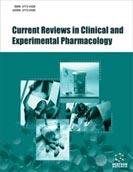Abstract
Background: Stroke is the leading cause of long-term disability worldwide. Stroke recurrence is a major health problem with devastating consequences. Adherence to secondary prevention guidelines reduced stroke recurrence. Data regarding prescriptions adherence to secondary prevention guidelines in the Middle East and North Africa is lacking.
Objectives: The aim of this study is to assess the degree of physician adherence to ASA guidelines and the patient specific factors that affect their prescribing patterns in a major teaching hospital in Jordan.
Methods: Ischemic stroke patients referring to King Abdullah University Hospital were approached and offered a description of the study to obtain their informed consent. After getting the informed consent, their prescription at the time of discharge was evaluated for adherence to secondary prevention guidelines and classified into adherent and non-adherent based on a composite score that included each of the guidelines which indicated therapeutic classes. Odds ratio for adherence and their 95%confidence intervals were calculated and adherence to specific therapeutics classes was evaluated.
Results: Two hundred and seventy-five patients were included in this evaluation. Less than 50% of the patients received guideline’s adherent prescriptions. Patients with hypertension and hyperlipidemia were associated with a lower probability were prescribed a guidelines adherent regimen (OR 0.485, 0.0.225, respectively). ACEI/ARBs combination with thiazides was prescribed to about 11.52% of the patients.
Conclusion: Adherence to stroke secondary prevention guidelines was suboptimal especially in the antihypertensive prescription component. Further assessments and evaluations are required to improve guidelines adherence.
Keywords: Guidelines adherence, hypertension, prescribers' attitude, patient factors, secondary prevention, stroke.
Graphical Abstract
[http://dx.doi.org/10.1161/CIR.0000000000000659] [PMID: 30700139]
[http://dx.doi.org/10.1161/STR.0000000000000024] [PMID: 24788967]
[http://dx.doi.org/10.1177/1753944708093411] [PMID: 19124436]
[http://dx.doi.org/10.1177/2396987317699144] [PMID: 29900406]
[http://dx.doi.org/10.1016/j.clinthera.2011.12.011] [PMID: 22284998]
[http://dx.doi.org/10.1179/174313208X300404] [PMID: 18544256]
[http://dx.doi.org/10.1016/j.ijcard.2018.07.120] [PMID: 30064925]
[PMID: 16756450]
[http://dx.doi.org/10.1016/S0140-6736(09)60503-1]] [PMID: 19482214]
[http://dx.doi.org/10.1161/STROKEAHA.110.580209]] [PMID: 20522818]
[http://dx.doi.org/10.1016/S0140-6736(01)06178-5] [PMID: 11589932]
[PMID: 16199917]
[http://dx.doi.org/10.1016/S0140-6736(02)08090-X] [PMID: 11937179]
[http://dx.doi.org/10.1016/j.jacc.2004.10.068] [PMID: 15734615]
[http://dx.doi.org/10.1097/01.hjh.0000354517.82698.51] [PMID: 19491619]
[http://dx.doi.org/10.1016/S0140-6736(16)31357-5] [PMID: 27616593]
[http://dx.doi.org/10.1177/0004563217693651] [PMID: 28135841]
[http://dx.doi.org/10.1161/JAHA.118.009856]] [PMID: 30371321]
[http://dx.doi.org/10.1016/S0140-6736(96)09457-3] [PMID: 8918275]
[http://dx.doi.org/10.1161/STROKEAHA.111.637686] [PMID: 22282894]
[http://dx.doi.org/10.1136/bmj.k5108] [PMID: 30563866]
[http://dx.doi.org/10.1159/000369778]] [PMID: 25547900]





























